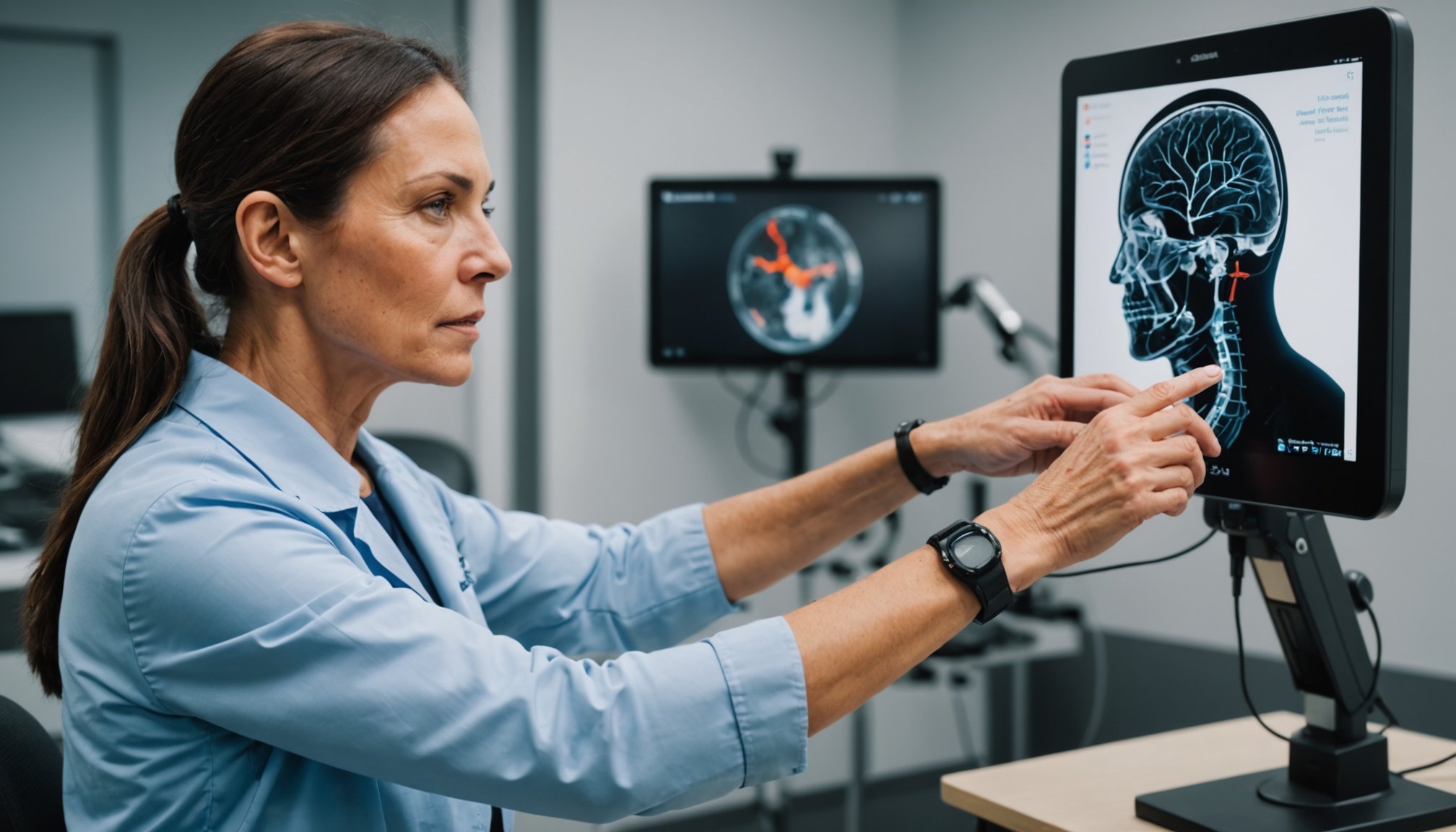Overview of Haptic Technology in Rehabilitation
Haptic technology has emerged as a revolutionary force in the field of modern rehabilitation. By simulating touch through mechanical or virtual interaction, it plays a pivotal role in enhancing patient recovery. The working mechanics of haptic technology involve sophisticated sensors and feedback systems that create tactile sensations, allowing patients to engage with virtual environments or control devices through touch. These systems are crafted to mimic the texture and force dynamics experienced in real-world interactions.
Key innovations in this field include advanced haptic feedback systems, designed to cater to diverse rehabilitation needs. This technology ensures a high degree of precision, improving therapeutic outcomes particularly in stroke rehabilitation. Emphasizing real-time interactions, haptic devices allow for dynamic adjustments that cater to patient-specific requirements, fostering a level of personalization previously unattainable with traditional methods. As rehabilitation innovations continue to evolve, haptic technology is at the forefront, driving significant improvements in patient care and engagement. Through its precise and responsive feedback, patients receive an enriched therapeutic experience that encourages active participation and ultimately accelerates the recovery process.
In parallel : Conquering Phobias: How Virtual Reality Exposure Therapy Transforms Fear
Application of Haptic Technology in Stroke Rehabilitation
Haptic applications are revolutionizing the field of stroke recovery by integrating with traditional rehabilitation practices. These innovative devices, such as haptic gloves and exoskeletons, provide immersive experiences that engage patients more effectively. Unlike conventional methods, haptic technology customizes rehabilitation techniques to address individual needs, enhancing patient-specific outcomes.
The use of haptic gloves enables stroke patients to reconnect with their sense of touch by simulating realistic sensations, thereby promoting motor skill recovery. Meanwhile, exoskeletons offer support by facilitating movement in affected limbs, allowing patients to practice correct motor patterns. This approach not only increases engagement but also accelerates progress through real-time feedback.
Personalized rehabilitation programs powered by haptic technology boast numerous benefits for stroke recovery. By focusing on specific impairments, these programs cater to diverse needs, fostering improved mobility and dexterity. The tailored experience offered by haptic applications empowers patients to take an active role in their rehabilitation journey.
Through these advancements, haptic technology is transforming stroke rehabilitation, offering hope for improved recovery outcomes and enhanced quality of life for patients. The intersection of innovative devices and personalized care exemplifies the future of effective rehabilitation techniques.
Evidence of Effectiveness
Research studies have extensively explored the effectiveness of haptic technology in improving patient recovery outcomes. These studies provide strong evidence that haptic technology significantly enhances rehabilitation processes, particularly for stroke patients. With a focus on haptic feedback systems, researchers have identified measurable improvements in motor functions and sensory feedback post-stroke. Data indicate that when compared to traditional methods lacking haptic input, patients using these advanced systems typically show faster recovery times and greater improvement in mobility.
In comparative analyses, haptic-assisted rehabilitation demonstrated statistically higher success rates in regaining limb functionality. For instance, patient trials have reported notable progress in dexterity and strength after incorporating haptic technology as part of routine rehabilitation. Patient outcomes benefiting from haptic technology reflect its innovative edge, leading to enhanced therapeutic engagements and quicker rehabilitative progress.
Statistical reviews from various case studies underscore the direct correlation between haptic feedback mechanisms and marked recovery improvements. This evidence illustrates the transformative potential of haptic applications in modern rehabilitation settings, affirming their place as essential tools for stroke recovery and beyond. As research continues, these promising outcomes position haptic technology as a cornerstone of future rehabilitation strategies.
Patient Testimonials and Case Studies
When discussing patient experiences with haptic technology, real-life insights provide a profound understanding of its transformative impact. Several case studies highlight remarkable recovery journeys, underscoring the technology’s effectiveness. For example, a stroke patient who employed a haptic glove reported substantial improvement in dexterity and confidence. Such testimonials embody the emotional and psychological benefits observed during rehabilitation, illustrating the renewed hope and engagement haptic technology fosters.
In another case study, an individual using exoskeletons experienced enhanced limb mobility and regained the ability to perform daily tasks independently. These experiences form a compelling narrative, painting a vivid picture of how haptic innovations reshape recovery outcomes.
These testimonials are invaluable, offering a personal glance at haptic technology’s role in providing not just physical improvements but also significant emotional uplift. The account of patients who felt more motivated to engage in their therapy sessions stresses the engaging nature of haptic systems. Through these narratives, the broader implications of haptic rehabilitation become clear—shaping a future where recovery is not only more effective but also enriching.
Experts’ Insights on Future Trends
The future of haptic technology in rehabilitation is promising, with experts forecasting significant advancements. As rehabilitation trends shift, there is a growing emphasis on integrating haptic devices with artificial intelligence to enhance patient outcomes. This evolution points toward systems capable of adapting in real time to individual needs, offering even more personalised care.
Expert opinions highlight the value of interdisciplinary collaboration in driving these innovations. By bringing together engineers, therapists, and medical professionals, the development of more effective haptic solutions is accelerated. This team effort is crucial for fine-tuning devices that cater to the unique challenges of each patient’s recovery journey.
Moreover, the role of haptic technology is set to expand beyond stroke rehabilitation. Experts predict its application in fields such as orthopaedics and paediatrics, addressing diverse therapeutic needs. As technology advances, haptic systems will likely become more accessible, ensuring broader reach and benefit.
In summary, expert insights suggest that the continuous evolution of haptic technology will redefine future rehabilitation practices. These innovations hold the promise of making recovery a more efficient, customisable, and empowering experience for patients worldwide.
Conclusion on Haptic Technology’s Impact
The impact of haptic technology on stroke rehabilitation has been profound, reshaping traditional recovery methods. Its ability to provide real-time feedback enhances therapeutic processes, leading to substantial improvements in patient experiences. Key to this success is the merging of technological advancements with patient-specific programs, allowing a personalized rehabilitation approach that addresses unique needs.
As we look towards the future, continuous advancements promise further refinement and expansion of haptic systems, ensuring broader applications not limited to stroke recovery. Momentum is building for its integration into other medical fields, driven by ongoing research. This sustained innovation is pivotal for refining these technologies to meet diverse therapeutic needs, offering new hope and options for patient care.
With a strong basis in evidence and patient voices, the future is promising for haptic rehabilitation. Therefore, stakeholders should invest in developing and exploring these technologies further. It represents an exciting frontier in medical technology, promising to unlock new possibilities in rehabilitation techniques and enhance recovery for patients worldwide. In essence, haptic technology sets a new standard in rehabilitative care.






